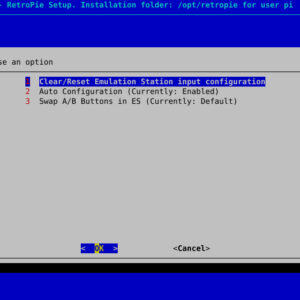

- HOW TO INSTALL RETROPIE IMAGE ON MICRO SD FULL
- HOW TO INSTALL RETROPIE IMAGE ON MICRO SD SOFTWARE
- HOW TO INSTALL RETROPIE IMAGE ON MICRO SD DOWNLOAD
- HOW TO INSTALL RETROPIE IMAGE ON MICRO SD MAC
- HOW TO INSTALL RETROPIE IMAGE ON MICRO SD WINDOWS
This reads the SD card’s data, turns it into an image, and saves that image at the specified location. When you’re done, click the “Read” button. If your Pi has multiple partitions, choose the first one-but don’t worry, this process will clone the entire card, not just the individual partition. Next, choose your Pi from the “Device” dropdown. I’ve given mine a name that lets me know which project and Pi in my house it’s for. In Win32 Disk Imager, click the blue folder button to select the location for the image you’re going to create. That’s okay, don’t format it! Just close the window and move on with the process. Note: If your Pi project is Linux-based (as many are), you may get a warning that the SD card is unreadable by Windows, and needs to be formatted. We recommend something like this Anker 8-in-1 reader ($10) because you can also use it for different SD formats. If you don’t have a reader built in to your PC, you’ll need to buy one.
HOW TO INSTALL RETROPIE IMAGE ON MICRO SD DOWNLOAD
Plug the SD card into your computer, download Win32 Disk Imager (if you haven’t already), and start it up. When your Pi is set up exactly as you want, shut it down and remove its SD card. For example, I use this technique for my two Raspberry Pis running Kodi-if either ever goes down, I can just re-clone my personal image, and the boxes are back up and running in no time, grabbing up-to-date library data from my home server and MySQL database as if nothing ever happened.Īnd as a bonus, you can more easily share your Raspberry Pi projects by just writing your cloned image out to a new SD card (or sharing the image itself). If you ever make changes to the Pi project, you’ll need to re-clone the image, but with a lot of projects, this is perfect. This works best with those Pi projects that require initial setup and then just run in the background, doing their thing. (If you don’t use Windows, you can do something similar on Linux with the dd command.) It’s so simple, every Raspberry Pi user should do it. When that happens, I can just re-clone that image to the SD card, overwriting the broken or corrupt version, and I’m be back up and running in no time. There I keep it, safely, until something goes wrong with my Pi.
HOW TO INSTALL RETROPIE IMAGE ON MICRO SD WINDOWS
Once I set up my Pi project exactly how I want it, I just use Win32 Disk Imager on Windows to clone an image of its SD card onto my PC. It does not store any personal data.I’ve had this happen all too often, and I eventually figured out a good solution. The cookie is set by the GDPR Cookie Consent plugin and is used to store whether or not user has consented to the use of cookies.

The cookie is used to store the user consent for the cookies in the category "Performance". This cookie is set by GDPR Cookie Consent plugin. The cookie is used to store the user consent for the cookies in the category "Other. The cookies is used to store the user consent for the cookies in the category "Necessary".

The cookie is set by GDPR cookie consent to record the user consent for the cookies in the category "Functional". The cookie is used to store the user consent for the cookies in the category "Analytics". These cookies ensure basic functionalities and security features of the website, anonymously. Necessary cookies are absolutely essential for the website to function properly. How do I add pictures to my Raspberry Pi? Now you can drag and drop files directly to RetroPie. This will open the RetroPie ROMs directory on your Pi. Access the computer with your ROMs and open the Finder tool on macOS.
HOW TO INSTALL RETROPIE IMAGE ON MICRO SD MAC
Transfer ROMs via Network share on Mac Make sure your Pi and computer with ROMs are on the same network.
HOW TO INSTALL RETROPIE IMAGE ON MICRO SD SOFTWARE
HOW TO INSTALL RETROPIE IMAGE ON MICRO SD FULL
This project features a full RetroPie setup housed inside of an old iMac machine.


 0 kommentar(er)
0 kommentar(er)
